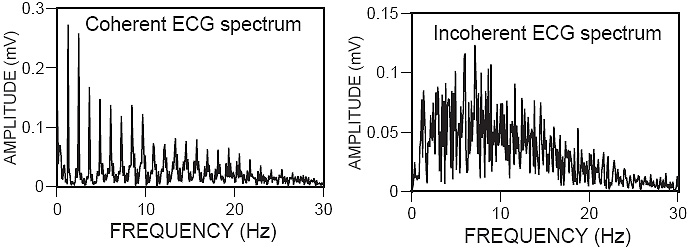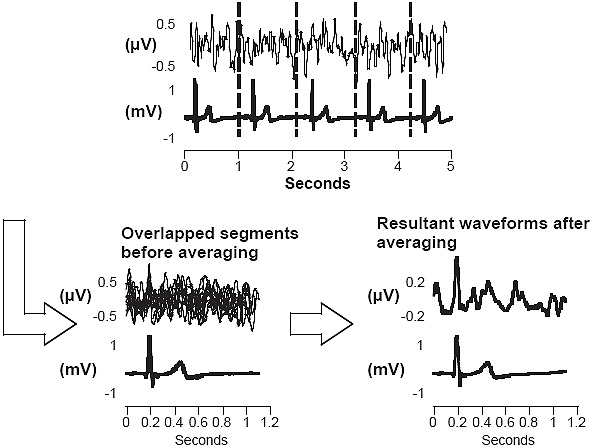Search Research Library:
Research Library
Publication
The Electricity of Touch: Detection and Measurement of Cardiac Energy Exchange Between People
Table of Contents:
2. Introduction
The concept of an energy exchange between individuals is culturally a universal belief and is a central theme in many of the healing arts of both Eastern and Western medicine, now often referred to as Energy Medicine. One of the main blocks to the acceptance of these so-called alternative therapies by western science has been the lack of a plausible mechanism that could explain the nature of this energy or how it is exchanged. Nevertheless, numerous of studies of Therapeutic Touch practitioners, healers and other individuals have demonstrated a wide variety of effects on healing rates of wounds,1, 2 pain,3, 4 hemoglobin levels,5, 6 conformational changes of DNA and water structure7 as well as psychological improvements. 8, 9 If we define energy as the capacity to produce an effect, these experiments suggest that an exchange of energy has occurred. It has also been demonstrated that many of these therapeutic effects occur without physical touch, indicating that energy of some kind is radiated or broadcast between practitioner and patient.8References to the concept of an energy exchange between people can also be found in the psycho-therapeutic field as a sense of energetic interaction between the practitioner and patient. This concept dates back at least to Freud, who proposed in The Anxiety Neuroses that an energy exchange between practitioner and patient operated at an unconscious level to bring about changes in the patient’s mental, emotional and physical well-being.9Many of the healing professions emphasize the importance of the attitude or intention of the practitioner in order for the greatest facilitation of the healing process to occur.8, 10, 11 The importance of intention has been demonstrated in several studies,12 including one at our laboratories.7 In addition, we have previously shown that a person’s inner emotional state directly affects the coherence in the electromagnetic field generated by the heart,12, 13 and that sincere feelings of appreciation, love or care produce increased coherence in the cardiac field. This is especially significant, as the heart generates the strongest electromagnetic field produced by the body, measurable a number of feet away from the body with SQUID-based magnetometers13 and sensitive electrostatic detectors.14It has been argued that even if there were an energy exchange between people, the energy contained in the signal would be too weak to produce significant effects in a biological system. However, recent research has established that the noise in biological systems can play a constructive role in the detection of weak periodic signals via a mechanism known as stochastic resonance.15 In essence, stochastic resonance is a nonlinear cooperative effect in which a weak, normally sub-threshold periodic (coherent) stimulus entrains ambient noise, resulting in the periodic signal becoming greatly enhanced and able to produce large scale effects. The signature of stochastic resonance is that the signal-to-noise ratio in the system rises to a maximum at some optimal noise intensity, corresponding to the maximum cooperation between the signal and the noise. Essentially, the noise acts to boost the sub-threshold signal to a level above the threshold value, enabling it to generate measurable effects. Stochastic resonance is now known to occur in a wide range of systems, including sensory transduction, neural signal processing and oscillating chemical reactions,15, 16 and is firmly established as a valid and far more general phenomenon than previously thought.
There has been much debate over the capacity of extremely low frequency electromagnetic fields to affect living tissue. Theoretical estimates predict the interaction energies of these fields after penetrating the tissue to be up to three orders of magnitude smaller than the average energy of thermal fluctuations.16 However, the effect of stochastic resonance operating in the noisy environment of a biological tissue would be to greatly amplify the external field’s energy, possibly to the point of enabling it to have significant repercussions in the system. The electromagnetic energy patterns produced by the human heart when an individual is in the internal coherence mode, a state reached when feeling sincere love Figure 1 below, is a clear example of a coherent, extremely low frequency electromagnetic field. 17, 18 Recent advances in our understanding of the interaction between coherent signals and noise in nonlinear systems has led to the hypothesis that under certain circumstances these nonthermal, coherent electromagnetic fields are detectable by biological systems at the cellular and sub-cellular level.15, 19, 20 For example, it has recently been demonstrated that nonthermal, extremely low frequency electromagnetic signals can affect intracellular calcium signaling.21 In addition, coherent electromagnetic fields have been shown to produce substantially greater effects than incoherent signals on enzymatic pathways, such as the ornithine decarboxylase pathway.22 This suggests that increased cardiac coherence, and thus one’s emotional state, may affect cellular function.

Figure 1.
Coherent and incoherent ECG spectra
Both of the above graphs are amplitude spectra of 10-second epochs of ECG data. Thelefthand graph is an example of the internal coherence mode of heart function. This coherence is associated with sustained, sincerefeelings of love and other positive emotions. The graph on the righthand side depicts an incoherent spectrum and is typical of feelings ofanger or frustration.
The fact that the heart’s electromagnetic field (ECG) can be measured anywhere on the surface of the body and also several feet away from the body, coupled with the recent discovery that this field can become more coherent as the individual shifts to a sincerely loving or caring state, prompted us to investigate the possibility that the field generated by the human heart may be the source of the energy exchanged between practitioner and patient in many healing practices. We therefore set out to develop a method of measuring an electrical exchange between people when they touch or are in proximity. This paper presents a few examples from a number of experiments demonstrating that when individuals touch or are in proximity, one person’s electrocardiogram (ECG) signal is registered in the other person’s electroencephalogram (EEG) and elsewhere on the other person’s body. Simultaneously and independently, Russek and Schwartz conducted similar experiments in which they also showed the registration of one individual’s cardiac signal in another’s EEG recording when two people sat quietly opposite one another.23 In a recent publication entitled "Energy Cardiology,"24 Russek and Schwartz discuss the implications of this finding in the context of what they call a "dynamical energy systems approach" to describing the heart as a prime generator, organizer and integrator of energy in the human body.
The research described here was not designed as a comprehensive, rigorous study to yield results to be subject to statistical analysis, and is not intended to be presented or evaluated as such a study. Rather, we present here a small sampling of results gathered over several years of experimentation that provide intriguing evidence of the exchange of electromagnetic energy produced by the human heart that occurs when two people touch or are in proximity, as well as an experimental protocol that allows such effects to be measured. The results described in this paper are representative examples of the types of data that have been collected from numerous experiments conducted with many different subjects over several years’ time. We recognize that these results raise more questions that they answer; and it is our intention that this initial compilation of data might stimulate other interested researchers to pursue the challenge of designing and conducting experiments that further address some of these questions.
Signal Averaging
The measurements presented in this paper were achieved using signal averaging techniques. Signal averaging is a digital procedure for separating a repetitive signal from noise without introducing signal distortion Figure 2 below. The superimposition of any number of equal-length epochs, each containing a repeating periodic signal, emphasizes the periodic signal at the expense of irregular variations constituting the noise. The technique was first used in detecting radar signals and was later applied in human physiology to detect and record cerebral cortical responses to sensory stimulation, now known as the cortical evoked potential or event-related potential.25 The procedure is also used in cardiology to analyze the ECG and is known in this field as micro-potential analysis. In this study, the signal averaging technique was applied to detect signals that were synchronous with the peak of the R-wave of one subject’s ECG in recordings of another subject’s EEG or body surface.

Figure 2.
The Signal Averaging Technique
The sequence of the signal averaging procedure is shown above. First, the signals recorded fromtwo subjects are digitized and recorded in a computer. The R-wave (peak) of the ECG recorded from the individual designated as the"signal source" is used as the time reference for cutting the two signals into individual segments. The individual segments are thenaveraged together to produce the resultant waveforms. Only signals that are repeatedly synchronous with the signal source’s ECG arepresent in the resulting waveform. The signals which are not related to the signal source are eliminated by the process.

